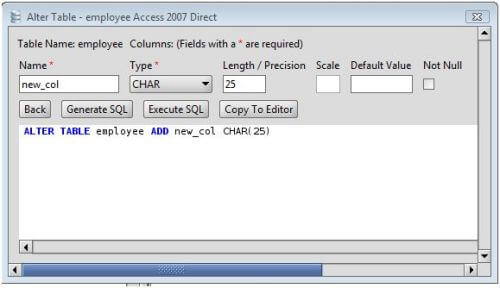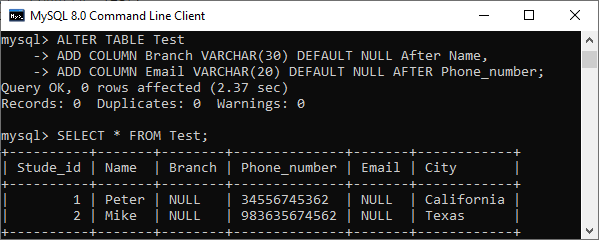

The account (using GRANT IMPORTED PRIVILEGES on the parent database), access is also granted to the replacement If the existing table was shared with your account as a data consumer, and access was further granted to other roles in If the existing table was shared to another account, the replacement table is also shared. Specifies to retain the access privileges from the original table when a new table is created using any of the following Specifies a default collation specification for the columns in the table, including columnsįor more details about the parameter, see DEFAULT_DDL_COLLATION. SELECT statements, or by creating and querying one or more streams on the table.įALSE does not enable change tracking on the table.ĭefault: FALSE DEFAULT_DDL_COLLATION = ' collation_specification ' The change tracking metadata can be queried using the CHANGES clause for These columns consume a small amount of storage. Storing change tracking metadata in the columns. This setting adds a pair of hidden columns to the source table and begins TRUE enables change tracking on the table. Specifies whether to enable change tracking on the table. Prevent streams on the table from becoming stale.įor a detailed description of this parameter, see MAX_DATA_EXTENSION_TIME_IN_DAYS. Object parameter that specifies the maximum number of days for which Snowflake can extend the data retention period for the table to MAX_DATA_EXTENSION_TIME_IN_DAYS = integer For more details, seeĭefault: No value (no clustering key is defined for the table)Ī value of 0 effectively disables Time Travel for the table. Specifies one or more columns or column expressions in the table as the clustering key. For more information about constraints, see Constraints. If the USING clause is omitted, Snowflake treats the conditional masking policy as a normalĭefines an inline or out-of-line constraint for the specified column(s) in the table.įor syntax details, see CREATE | ALTER TABLE … CONSTRAINT. When a query is made on the first column. The additional columns specify the columns to evaluate to determine whether to mask or tokenize the data in each row of the query result The first column in the list specifies the column for the policy conditions to mask or tokenize the data and must match theĬolumn to which the masking policy is set. Specifies the arguments to pass into the conditional masking policy SQL expression. Specifies the masking policy to set on a column. If a table is not declared as TRANSIENT or TEMPORARY, the table is permanent.ĭEFAULT and AUTOINCREMENT are mutually exclusive only one can be specified for a column. That can be recreated externally to Snowflake.ĭefault: No value. As such, transient tables should only be used for data That data in a transient table might be lost in the event of a system failure. However, transient tables have a lower level of data protection than permanent tables, meaning

Like a permanent table, a transient table exists until explicitly dropped and is visible to any Storage Costs for Time Travel and Fail-safe Working with Temporary and Transient Tables

Not the table that already exists in the schema.įor information about temporary or transient tables, and how they can affect storage and cost, refer to the following resources: If you drop the table, you drop the temporary table, and If you created a temporary table with the same name as another table in the schema, all queries and operations used on the table onlyĪffect the temporary table in the session, until you drop the temporary table. If you want to avoid unexpected conflicts, avoid naming temporary tables after tables that already exist in the schema. If a table is not declared as TEMPORARY or TRANSIENT, the table is permanent. To a table created with the TEMPORARY keyword.ĭefault: No value. Tables created with any of these keywords appear and behave identically to prevent errors when migrating CREATE TABLE statements). GLOBAL TEMPORARY) are provided for compatibility with other databases The synonyms and abbreviations for TEMPORARY (e.g. Temporary table and all its contents are dropped at the end of the session. Specifies that the table persists only for the duration of the session that you created it in.


 0 kommentar(er)
0 kommentar(er)
